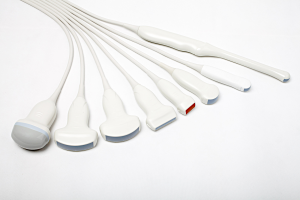How to choose your ultrasound machine?
During my musculoskeletal ultrasound training courses a systematic question raise up : ” which device should I use or buy and what the best price-quality ratio ?”
This simple question required a complex answer though. I’ll do my best to answer to that question in order to enlighten the readers who wish to buy their own ultrasound device for a musculoskeletal use.
As a starting point,if you plan to buy an ultrasound device there are many factors to take into consideration . Whoever is the investor, the important is get your money’s worth!
1. BUDGET
First thing to do is considering your budget. It’s currently possible to find in the market a large panel of devices with prices varying from double.
However,you will always need to consider one of the main factor which is dependent of your budget ; the quality of your machine. It is possible to go to 60 or 80 000 € depending on your bank account but you need to take into consideration that in 2016 a budget between 12 and 18 000€ allows you to purchase a device with a good doppler’s quality.
Beginner vs advanced
As a beginner and depending on your profession, General Practicioner, sports doctor, rheumatologist, physiotherapist, ostheopath, the interest in a device with doppler, even though useful, is not always justified.
Indeed, a doppler will be more useful in medical professions where the diagnostic is the final goal, contrary from a profession where the ultrasound is done in the purpose of orientating the treatment. Of course, it’s important in both cases to know the different pathologies of the musculoskeletal system even if the final objective is not the same.
An black and white ultrasound machine without any doppler can be a good compromise for a beginner especially when your purpose is to observe more objectively and more deeply the tissues, the articular system, the mobility, etc… In short, this use is known under the current term of “echoscopy”. The doppler is totally useless if you use your ultrasound as a biofeedback (BFB), for instance : the perineum rehabilitation.
In that case, prices can vary between 4 and 9 000 €.
If you use the device as a BFB, you could still buy a second hand device or even search among our veterinary’s friends. Indeed, the only difference between a machine for “animal or human” is in the software, the rest is the same !
 Once you have an idea of your budget, do not rush on the first device encountered, neither on the one you used during your training.
Once you have an idea of your budget, do not rush on the first device encountered, neither on the one you used during your training.
First, it is better to try as much devices as you can. There are enough different designs in different brands to get an idea of what would suit you the best in your practice.
It’s also interesting to test a superior range to your budget because there is always an agreement that can be found with your reseller/ supplier to lower the price ( the commission margin being variable).
Be aware of the sales representatives in your region. ( Appart from some that could be able to resells their own mother) they are essential in your purchase and in the after-sales follow up or updating your machine.
Do not hesitate to ask for a period of probation or for a temporary rental the time to make your decision. Don’t forget that when this period is past, you don’t have any obligation to purchase anything. No matter the pression or the deadlines given by your supplier. There are only marketing tricks and nobody can force you to buy.
Although it is also important to calculate in your budget some additional cost such as a new software or an eventual second probe etc …. You should not forget to think about the warranty and consider if it is not better to purchase a brand new machine with a 2 years warranty instead of choosing a second hand machine cheaper but without any warranty. In case of the machine dies surprisingly, you would only have your tears as consolation.
Nowadays, the best way to contact a reseller is through the website of the manufacturer, the representatives are all useful and most of the time would let you borrow a machine for a trial , the length of time being variable.
2. PORTABLE VS STATIC
Think about your main use and the place(s) where you work. Usually, a bigger ultrasound will give you a better image quality. However, it will be complicated to transport it, except if you have a big van or a buss as a vehicle. Think about the space you have and the one your machine ( trolley included) will take in your office.
If you opt for ultraportable models, quality and lack of functionality are often missing. This current tendency to ultra-portable is strongly developed for the diagnosis of emergencies or in cardiology emergency but for the musculoskeletal use performance remains poor.
There are portable models of ultrasound, of larger size and which are a good compromise between the cost / portability and the quality of the image.
Most functions are provided as standard; Functions such as measurement “callipers”, harmonic image, edge enhancement, color and power doppler (except on black and white devices) are currently the entry level levels. But as for a car as soon as you want an additional option, you will have to get out your wallet.
So before adding any option think if you really need elastography or any special option such as 3D/4D and this even more so when you are beginner, knowing that these options can be added later.
Depending on brands and ultrasound the battery is supplied or not and can bring the extra costs. Always good to know the charging and discharging time. in fact depending on the site of use you can find yourself with no possibility of immediate charge, in this case a second battery is essential (provided it is charged before of course!).
3. PROBES
Most probes are called multi-frequency (eg 4-12MHz). In musculoskeletal ultrasound you will generally need a high frequency linear probe.
The choice of the probe will also vary depending on your activity. Indeed you will not opt for the same probe if you are specialized in the hand or in the hip.
Higher frequencies of ultrasound have shorter wavelengths and are absorbed/attenuated more easily. Therefore, higher frequencies are not as penetrating. This explains why high frequencies are used for the superficial body structures and low frequencies are used for those that are deeper.
If your practice is mixed, it is recommended to start with a linear probe not too large to be able of using it for all joints and articular surfaces.
But if your practice is oriented for small joints such as the hand or the feet a probe of type “hockey stick” will be preferable. The resolution is much higher with a smaller head surface, this facilitates the movement on the bone surfaces while accentuating the quality of the ultrasound structures. Echo-guided injection will also be facilitated.
The low frequency convex probe will only be used in musculoskeletal deeper structures such as the hip for instance. However, since ultrasound is not the preferred examination for the hip, it will be preferred by standard radiography or MRI. So it is good to ask the question before a purchase of whether it will really useful.
In general, the convex probe is used for the abdominal region and therefore has no place in musculoskeletal. It will be very useful in perineal rehabilitation for physiotherapists specialized in this field.
4. PUNCTURE / INJECTION

All ultrasound scanners can be used to guide the needle.
Some devices have a specific software that will allow you to increase the echogenicity of the needle to facilitate the visualization of it
It is sometimes very useful but nothing is worth the practice and the experience. To do this, courses are regularly organized by Medical radiology organizations or physiotherapists in England within universities.
5. BUY FROM INTERNET
Nowadays everything is possible and even buying his machine from internet however there are several precautions to remember that all appeal to the common sense.
Above all, you have to check the reseller, his ranking and his reliability.
When you see a price that exceeds all competition, make sure that the device is sold with all accessories. Indeed in order to be more attractive some sales sites do not hesitate to sell you the machine without the probe. This one is sold separately and sometimes more expensive than the normal price.
The disappointed buyer wishing to find a cheaper probe then turns to the Asian market, the CE standards will not be respected because this market is not regulated in the same way. In addition to a compatibility problem with the machine there is also a risk of being harmful to the patient.
Although warranty is an important factor, after-sales service is even more important because it is often lacking with in addition many weeks of waiting and nervousness if something is not running with your machine. Check whether the service is easily reachable and responsiveness to your prior requests.
If you buy your equipment in a country other than Europe, check the terms of the contract and the warranty as well as the CE standards.
In all cases a minimum of 60 days money-back guarantee must be provided.
Go around the different sites and compare. Read reviews and comparisons. Look at comments and testimonials from other buyers on dedicated sites.
6. BUY FROM A SUPPLIER
Ultrasonography is being in full soar and it is common to find in the market new brands with aggressive sales techniques. These new unscrupulous cowboys will pride themselves on giving you the best market prices than the current market. Do not forget that you will always get only for your money and that it is impossible to buy a Ferrari at the price of a Citroën 2CV. Unless they sell you a metal sheet of a Ferrari with a 2CV engine inside….
Preferably buy your machine from a reseller or a reputable company/brand. Look at the companies that have been on the market for several years with excellent customer service. It will be always easier and more pleasant to have a representative who knows your needs and who will care about your evolution, because a good representative will not be interested in selling you only one device but many and following you in the long term .
With regard to the different reference brands, let yourself be guided by hospitals, look at the brands used by professionals and Radiologists friends. Once you have made your choice, you will only have to try it before you adopt it.






